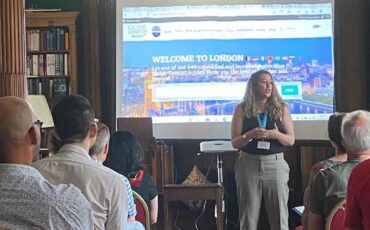As a Blue Badge Tourist Guide, finding a lavatory in London when you have a group of people desperate for some facilities and with no change to hand can be a bit difficult at times. So, let us join the campaign and ensure that everyone knows about World Toilet Day – 19 November! And let us campaign for more free toilets.
Fellow Blue Badge Tourist Guide Ros Stanwell-Smith gave an illuminating and entertaining illustrated talk last year on the development of public toilets from Henry III in the 1200s when he commissioned public toilets and underground draining. We owe so much to that man! 1356 was the first Sanitary Act and 1358 saw open gullies and flushing toilets. However it was Richard II in the 1390s who decreed against dung dumping. One interesting bit of information – in the 14th century it took 13 men five nights to clean out the cesspit at Newgate Jail. Richard Whittington’s famous House of Easement was introduced in 1423 and was still in use in the mid 19th century.
It was in the late 18th century when Alexander Cumming produced the S-Trap and Joseph Bramah improved it in 1778. 1851 saw George Jenning’s one-piece toilet and later that decade Thomas Crapper introduced the U-Bend and mass production. It was another twenty years before Thomas Twyford introduced the Porcelain toilet with no metal parts. All names that we are familiar with today, of course.
Some facts and dates which might be of interest:
- 1810 – 200,000 cesspits in London
- 1848 – Public Health Act – every new home to have facilities
- 1849 – Bazalgette’s scheme for public toilets
- 1851 – Great Exhibition – George Jennings installed public toilets and charged 1d per visit. 827,280 people used them – quite a profit!
- 1854 – First public urinal, Perth, Scotland – it was another 70 years before it was realised that women might also require public conveniences!
- 1858 – The Great Stink
- 1870s – Bazalgette and Sewers
- 1880s – Discovery of bacteria and the use of chlorine to sterilise and stop the smells from sewers

A modern London Public Toilet near Portobello Road Market, June 2006. Photo: ©Flickr ilovebutter.
Public toilets used to have a penny door lock but with decimalisation in 1971 it was phased out. For women, a Urinette was introduced which was a mini toilet with a curtain. A urinal was free but there was a fee for a closet. Interestingly, London companies did not provide toilets for their female office workers. Women were sacked rather than pay for a toilet. Sanitation was considered a nuisance rather than a necessity.
As we know there are fewer and fewer public toilets available. Ros reckons the ratio is one per 18,000 Londoners. So, let’s help with Lavatory Awareness, promote World Toilet Day and campaign for Mayor Boris Johnson to create more free facilities!
END
Would you like to explore London and beyond with a highly qualified and enthusiastic Blue Badge Tourist Guide? Use our Guide Match service to find the perfect one for you!







Leave a Reply